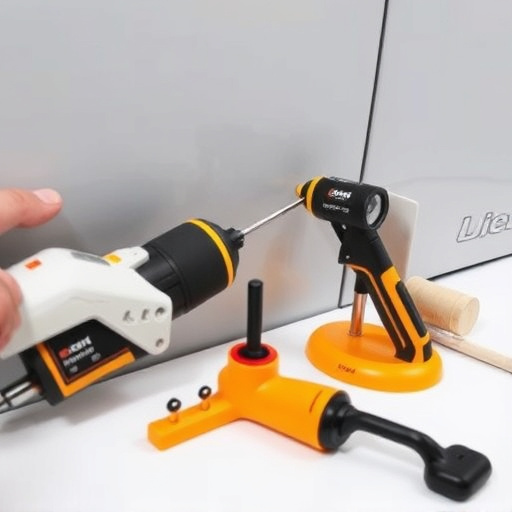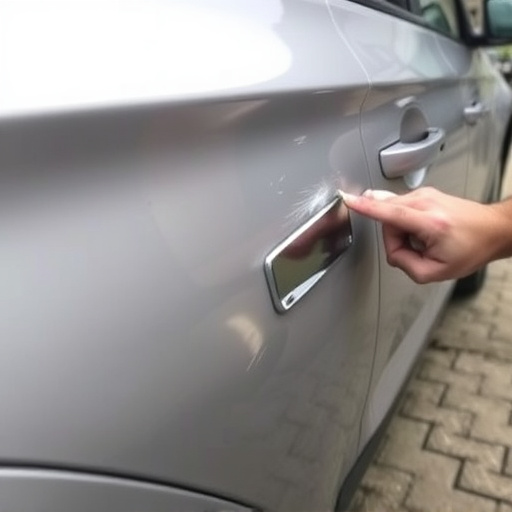Auto body shops should simplify repair option explanations by identifying common customer misunderstandings, using visual aids, and providing clear step-by-step processes. Analyzing customer feedback refines communication, especially for complex repairs, leading to enhanced satisfaction, trust, and business growth. Clear explanations empower clients to make informed decisions about their vehicle's repair options.
In the realm of customer service, effectively communicating repair options is a delicate art. Many clients often express confusion regarding available choices and processes, highlighting the need for clearer explanations. This article explores how valuable customer feedback can be leveraged to transform murky understandings into a transparent journey. By analyzing common confusion points, we uncover insights to refine communication strategies. Ultimately, this approach leads to improved satisfaction through clearer repair option explanations.
- Understanding Customer Confusion Points in Repair Options
- Analyzing Feedback to Refine Communication Strategies
- Implementing Clearer Explanations for Enhanced Customer Satisfaction
Understanding Customer Confusion Points in Repair Options

Many customers entering an automotive body shop or tire services after a minor incident like a fender bender face confusion when presented with various repair option explanations. This stems from complex procedures and terms used, leaving them uncertain about what’s involved in each option. To clear these misunderstandings, it’s crucial to identify common confusion points. For instance, customers might struggle differentiating between cosmetic fixes and structural repairs, or comprehending the difference between painting versus replacing parts.
By gauging customer feedback on these areas, shops can pinpoint specific explanations that cause the most confusion. This data-driven approach allows them to refine their repair option explanations, ensuring clarity and transparency. Simplifying technical jargon, providing visual aids, and offering detailed step-by-step processes for each repair option are effective strategies to demystify the process for clients, fostering trust in the shop’s services.
Analyzing Feedback to Refine Communication Strategies

Analyzing customer feedback is a powerful tool for refining communication strategies around repair options. By listening to what clients say—and more importantly, why they say it—repair shops can gain valuable insights into areas that require improvement. For instance, if there’s recurring feedback about complexity in explaining collision damage repair processes or concerns about the clarity of car body repair estimates, these become clear signals for adjusting communication tactics.
This data-driven approach ensures that when a customer walks away from a conversation or receives an estimate, they understand their options better. Whether it’s simplifying jargon during consultations or providing more detailed step-by-step breakdowns in written estimates for services like dent removal, analyzing feedback guides the refinement process to enhance overall communication quality.
Implementing Clearer Explanations for Enhanced Customer Satisfaction

Providing clear and concise explanations during the repair process is a powerful tool to enhance customer satisfaction. Often, complex procedures or technical terms can leave clients confused, leading to dissatisfaction and potential negative reviews. By implementing simpler language and breaking down intricate repair option explanations, businesses in the auto industry, such as those offering dent repair, car repair services, or auto glass repair, can ensure customers understand what’s involved.
This approach not only builds trust but also empowers clients to make informed decisions. When a business takes the time to clearly articulate each step of a repair process, it shows respect for the customer’s autonomy and decision-making ability. Consequently, this transparency fosters a positive perception of the company, encouraging repeat business and referrals.
By understanding customer confusion points and analyzing feedback, businesses can significantly enhance the clarity of their repair option explanations. This, in turn, fosters higher customer satisfaction and loyalty. Implementing clearer, more precise communications ensures that clients understand their options, leading to better-informed decisions and a positive experience throughout the repair process. Thus, prioritizing effective repair option explanations is not just beneficial but essential for any service-oriented business aiming for excellence.














